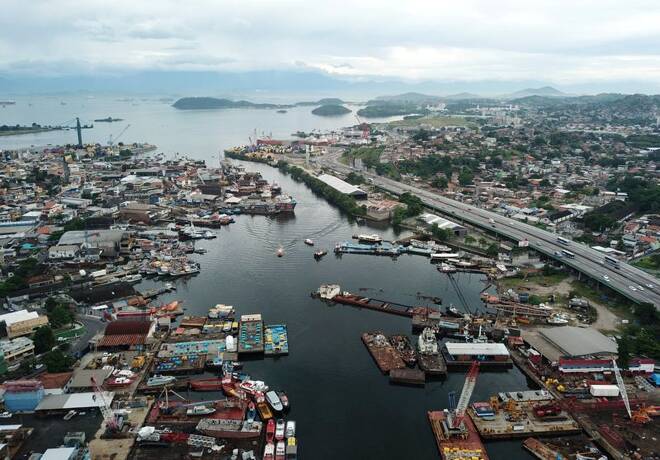Advertisement
Advertisement
Brazil’s haunting graveyard of ships risks environmental disaster, warns activist group
By:
By Pilar Olivares GUANABARA BAY (Reuters) - On a stormy evening in mid-November, a huge, abandoned cargo ship broke free of its moorings and slowly floated into the massive concrete bridge that carries cars across Brazil's Guanabara Bay to Rio de Janeiro.
By Pilar Olivares
GUANABARA BAY (Reuters) – On a stormy evening in mid-November, a huge, abandoned cargo ship broke free of its moorings and slowly floated into the massive concrete bridge that carries cars across Brazil’s Guanabara Bay to Rio de Janeiro.
Brazil’s navy said the 200-meter-long (660-ft.) Sao Luiz, a rust-spattered bulk carrier built in 1994, had been anchored in the bay for more than six years awaiting legal proceedings before it crashed into Latin America’s longest over-water bridge. The navy said it was investigating.
“The Sao Luiz is still in the Port of Rio today, with 50 tonnes of fuel oil in it,” Sergio Ricardo, co-founder of socio-environmental group Movimento Baia Viva (Living Bay Movement) told Reuters, also pointing to high levels of corrosion.
“The ship is unsafe and can cause an environmental disaster,” he said.
Worldwide, financial and legal problems are common reasons for owners abandoning ships.
The Sao Luiz is one of dozens of ships left to rust on the iconic but heavily polluted bay, once home to vast mangroves and thriving marine life.
The mangroves are now much reduced and pollution exacerbated by the graveyard of ships is threatening local sea-horses, green turtles and Guiana dolphins, a symbol of Rio de Janeiro.
A survey by the Rio de Janeiro State University found this year that just 34 Guiana dolphins remained in the bay, down from around 800 in the 1990s.
Besides the ships’ effect on marine life and passing vessels, which must navigate an obstacle course of half-floating hulks, pollution in the bay imposes a financial cost of some tens of billions of reais a year with its pollution, Ricardo estimated.
Fernando Pinto Lima, a 62-year-old former fisherman in the bay, told Reuters he used to be able to quickly catch 50 to 100 kilograms of fish. “Now to catch fifty kilograms, it’ll take you a week or a month,” he said.
Following the Sao Luiz crash, local media reported that authorities were studying how to remove the ghost ships. But the derelict vessels continue to molder on and under its muddy waters.
($1 = 5.2186 reais)
(Reporting by Pilar Olivares; Writing by Sarah Morland; Editing by Bradley Perrett)
About the Author
Reuterscontributor
Reuters, the news and media division of Thomson Reuters, is the world’s largest international multimedia news provider reaching more than one billion people every day. Reuters provides trusted business, financial, national, and international news to professionals via Thomson Reuters desktops, the world's media organizations, and directly to consumers at Reuters.com and via Reuters TV. Learn more about Thomson Reuters products:
Did you find this article useful?
Latest news and analysis
Advertisement
